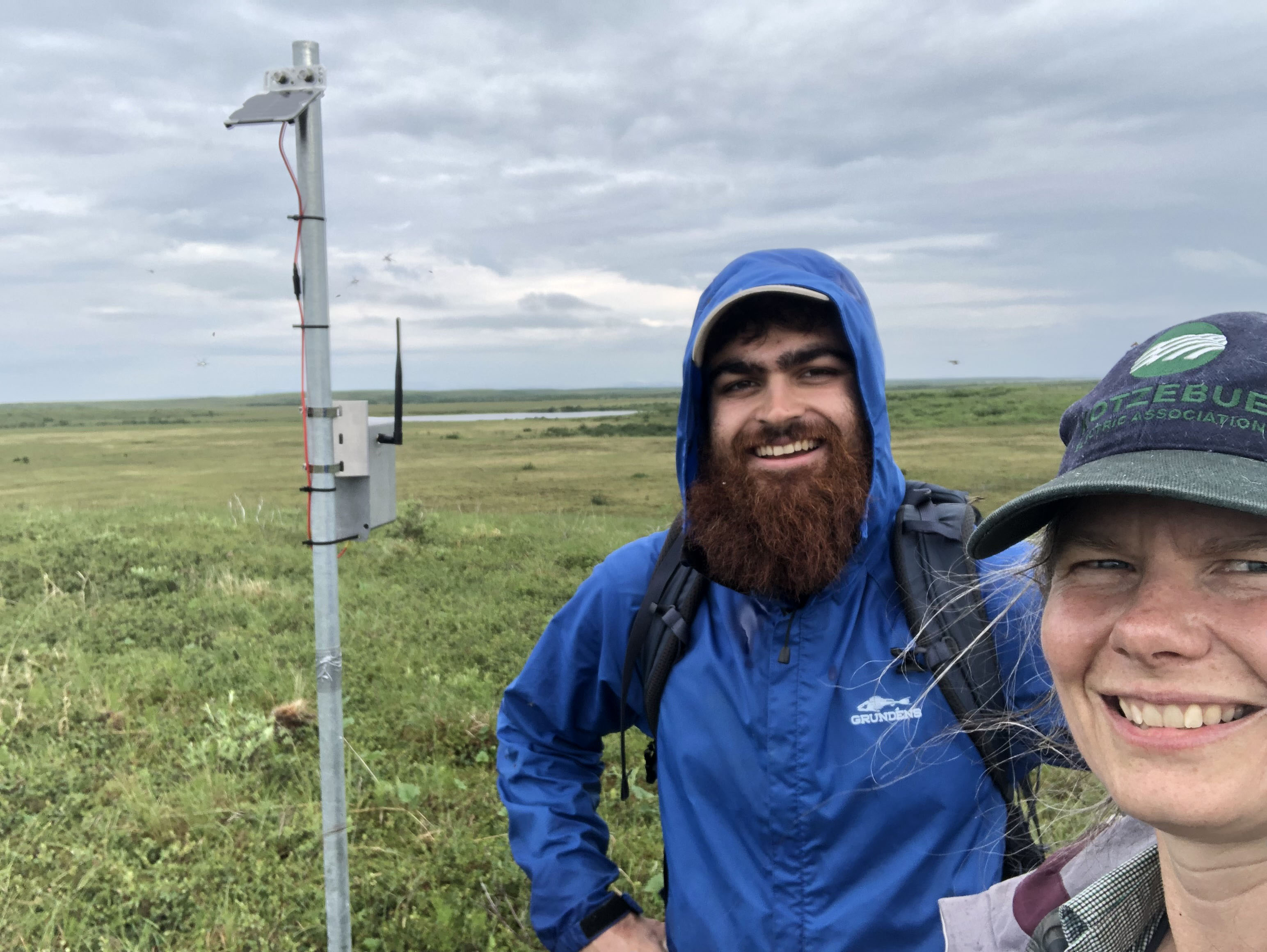Predicting Clouds can Help Solar Energy Production

Understanding how to predict clouds and other weather events affecting solar production will help communities develop and upgrade their solar farms, and it is a focus of ACEP’s Solar Technology Program.
ACEP research assistant Henry Toal and research engineer Michelle Wilber recently completed the installation of an array of 10 solar irradiance sensors around the Kotzebue Electric Association solar photovoltaic farm in Kotzebue, Alaska. A collaborative project between ACEP and KEA, the sensor array forms a roughly 2-mile circle around the solar PV plant. It will be used to develop models for predicting solar power production by detecting clouds before they reach the plant.
Smaller isolated electric grids need forewarning of sharp changes in renewable power production, such as those caused by clouds passing over solar PV arrays. Traditionally, small electric grids like the one operated by KEA use their diesel generators to compensate for short-term variability in solar PV. This, however, can lead to grid operators needing to run generators, and thus use valuable diesel fuel, to provide reserve capacity even when solar production meets or exceeds the power needs of the community. This project aims to test the viability of using sensors to detect approaching clouds and calculate their expected effect on solar PV production so that diesel generators can be left off during periods of high sun but be given enough warning to restart when needed.
The sensors are designed to be low-cost, easy to manufacture and reliable in the harsh weather found above the Arctic Circle. Powered by the same 1-watt solar panel they use to measure solar irradiance, as well as a small backup battery, the sensors have an expected lifespan of four to five years before needing to have their batteries replaced. Additionally, since the area near Kotzebue where the sensors are deployed mostly lacks cell coverage, the sensors rely on a radio communication protocol known as LoRaWAN to transmit their data to a central location. To save on bandwidth and power consumption, the sensors are programmed to transmit data more frequently when they detect a cloud, with only infrequent check-in data points reported during less variable periods.
The sensor array was installed by Toal and Wilber over the course of three days, with many of the sensors transported to remote, off-road locations on foot.
ACEP would like to give special thanks to the Kikiktagruk Inupiat Corp. for generously allowing the use of land where the sensor array is placed.
Special thanks also to Alan Mitchell of Analysis North, who helped tremendously with the design of the sensors and was an invaluable resource throughout the project.
For more information on this project, please contact Michelle Wilber at mmwilber@alaska.edu.
Henry Toal and Michelle Wilber stand in front of a solar irradiance sensor. Photo by Michelle Wilber.


